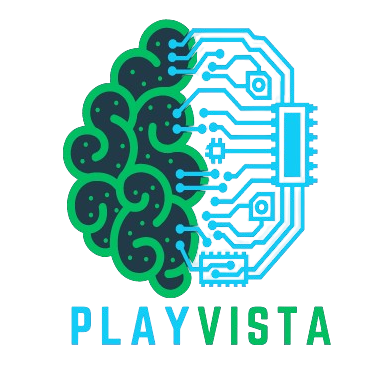Web design is an intricate blend of art and science that encompasses creating websites that are both visually appealing and highly functional. As the gateway to digital experiences, effective web design ensures that users not only find what they’re looking for but enjoy the process along the way. This article https://pazlive.com/ explores the fundamental aspects of web design, its evolution, current trends, and future directions.
Core Principles of Web Design
Web design is more than just arranging elements on a page. It involves several key principles that work together to create a cohesive and engaging user experience:
- Layout and Structure:
- Grid Systems: Utilizing grids helps maintain alignment and consistency throughout the site. It organizes content in a structured manner, making it easier for users to navigate.
- Whitespace: Proper use of whitespace (or negative space) helps to avoid clutter and makes content more digestible. It enhances readability and focuses user attention on key elements.
- Typography:
- Font Choice: Selecting the right fonts is crucial for readability and visual appeal. Web designers often use a combination of typefaces to create hierarchy and contrast.
- Readability: Ensuring that text is legible across different devices and screen sizes is fundamental. This involves choosing appropriate font sizes, line heights, and letter spacing.
- Color Theory:
- Color Palette: A well-chosen color palette enhances the website’s visual appeal and reinforces brand identity. Colors evoke emotions and influence user behavior, so they must align with the site’s purpose and audience.
- Contrast and Accessibility: High contrast between text and background improves readability, especially for users with visual impairments. Accessibility is a key consideration in modern web design.
- Imagery and Graphics:
- Quality: High-resolution images and graphics contribute to a professional look and feel. They should be optimized for fast loading times without compromising quality.
- Relevance: Visual elements should support and enhance the content rather than distract from it. They play a crucial role in conveying messages and engaging users.
- Navigation:
- Ease of Use: Intuitive navigation ensures that users can find what they need quickly and easily. Clear menus, search functionality, and well-organized content are essential.
- Consistency: Consistent navigation elements across the site help users build familiarity and confidence in their browsing experience.
The Evolution of Web Design
Web design has transformed significantly over the years:
- Early Web (1990s): Websites were simple and primarily text-based, with minimal styling. HTML provided basic formatting, and design was limited to simple color schemes and layouts.
- CSS Revolution (2000s): The introduction of Cascading Style Sheets (CSS) allowed for greater control over design elements, leading to more complex and visually engaging websites. This era marked the beginning of modern web design practices.
- Responsive Design (2010s): With the rise of mobile internet usage, responsive design became crucial. Websites began to adapt fluidly to various screen sizes and devices, ensuring a consistent experience across platforms.
- Interactive and Dynamic Design (2020s): The current era of web design focuses on creating highly interactive and dynamic experiences. Advanced animations, microinteractions, and personalized content are now common features.
Current Trends in Web Design
Several trends are shaping the modern web design landscape:
- Minimalism: Emphasizes simplicity by reducing visual clutter and focusing on essential elements. Minimalist design uses ample whitespace and a limited color palette to create a clean, user-friendly interface.
- Dark Mode: Offers a dark-themed interface that can reduce eye strain and enhance the visual appeal of websites, especially in low-light environments.
- Microinteractions: Small animations or design features that respond to user actions, such as button clicks or form submissions. These interactions make websites more engaging and provide immediate feedback.
- Asymmetrical Layouts: Break away from traditional grid structures to create dynamic and visually interesting designs. Asymmetry can add a unique touch and capture user attention.
- Bold Typography: Uses large, attention-grabbing fonts to emphasize important content and create a strong visual hierarchy.
- Personalization: Tailors content and design elements based on user preferences, behavior, or location. Personalized experiences can increase engagement and relevance.
The Future of Web Design
The future of web design is likely to be shaped by several emerging technologies and trends:
- Artificial Intelligence (AI): AI tools can automate design tasks, analyze user behavior, and provide design recommendations. This technology will likely make web design more efficient and tailored.
- Augmented Reality (AR) and Virtual Reality (VR): AR and VR offer new possibilities for immersive and interactive web experiences. These technologies can create engaging digital environments and enhance user interactions.
- Voice User Interface (VUI): As voice-activated devices become more common, integrating voice interactions into web design will be increasingly important. VUI can provide hands-free, accessible user experiences.
- Sustainability: Web design will focus more on environmental impact, including optimizing website performance to reduce energy consumption and adopting eco-friendly design practices.
Conclusion
Web design is a multifaceted field that combines aesthetics, functionality, and user experience to create compelling digital experiences. From its humble beginnings with simple HTML pages to today’s sophisticated, interactive websites, web design has continually evolved to meet changing technologies and user expectations. As we look to the future, web design will continue to embrace new trends and innovations, enhancing the way we interact with the digital world.

